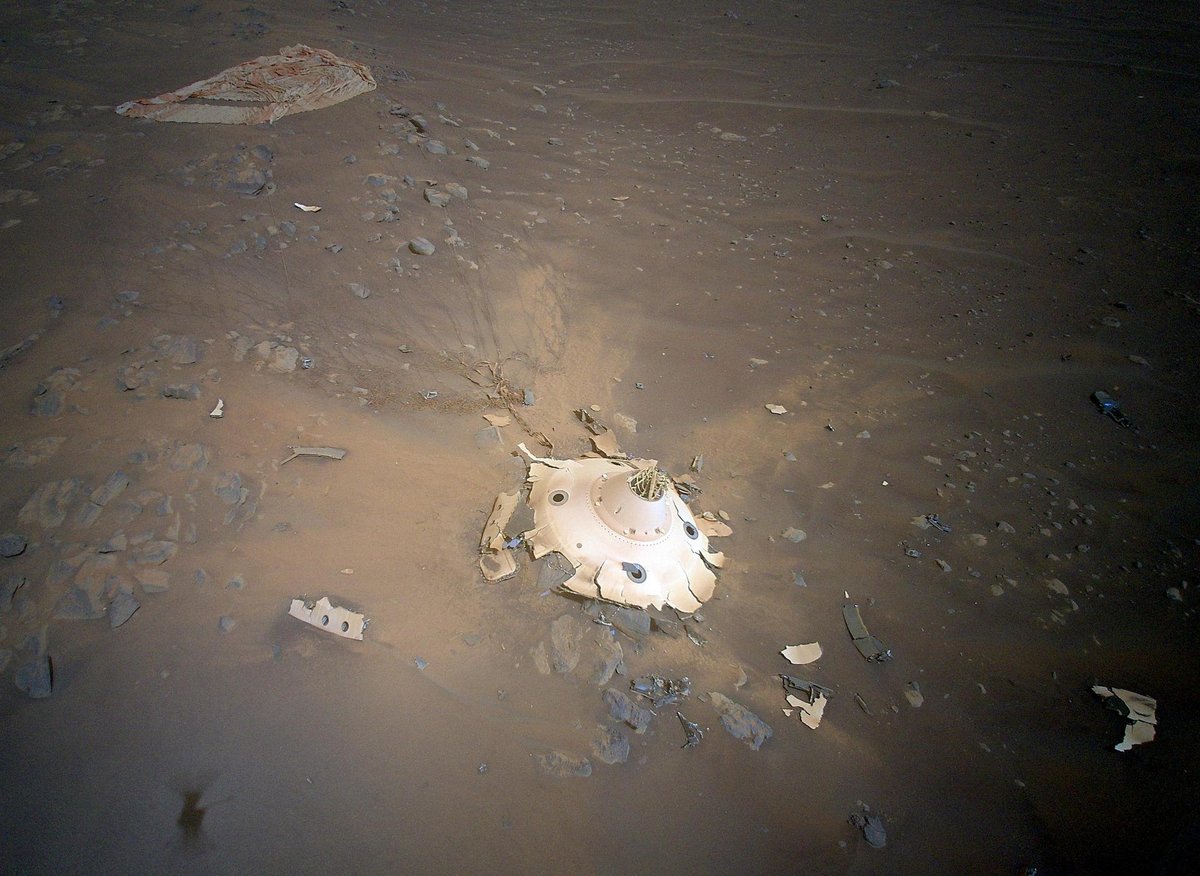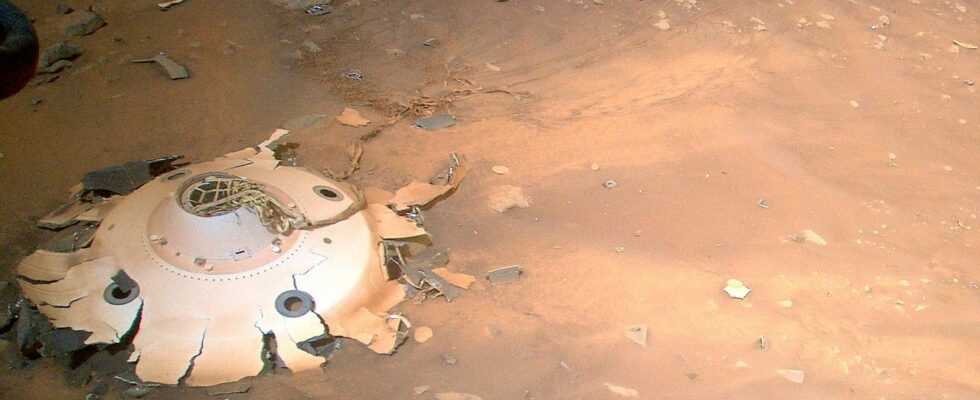Thanks to an overview of the small Ingenuity helicopter, NASA teams were able to discover the remains of the parachute and the rear shell of the Mars2020 mission, not far from the Jezero crater delta. A unique opportunity to see this material, on the surface of the red planet for more than a year!
Two essential elements to be able to descend to the surface…
Backtrack
February 18, 2021. During the atmospheric reentry of the Mars2020 mission, the large Perseverance rover is still folded up in its hull used for its six-month transfer to Mars. At high altitude, it is the heat shield that experiences the majority of the heat induced by braking in the thin atmosphere of the red planet, but 4 minutes later, the large parachute opens, while the whole is still sinking at 1,512 km/h.
Under the eyes of the cameras which will later transmit the images to Earth, the capsule brakes, drops its ventral shield, and prepares to detach the Skycrane, the last element which will drop off Perseverance (and under its belly, the small Ingenuity helicopter) at the surface.
One minute and 50 seconds under the parachute, then the latter ejects, and the rear hull with it. It was these two elements, which remained together until they touched the surface (at about 126 km/h) that Ingenuity flew over during its 26th flight on April 19.
Thank you Ingenuity!
The small twin-rotor helicopter, which has since successfully completed another flight, is still catching up with Perseverance. The latter has taken the lead and started its new scientific campaign since April 18, called the “Delta Front campaign”, which will consist of studying the layers of sediment at the entrance to the delta of the Jezero crater. On the menu, observations, laser shots and sample collection to bring back to Earth in the future!
But back to the parachute and the rear shell. The teams chose not to approach the rover in the area, which was not of major geological interest, and on the contrary posed dangers (especially if, in an uncoordinated movement, the rover was to get a wheel tangled in a parachute line, etc.). So this new hover ability is a godsend!
The images are already being analyzed at JPL (Pasadena, California) for feedback on the rear hull and the parachute. Its condition shocked more than one Internet user, but you should know that a parachute on Mars does not slow down as much as in the Earth’s atmosphere, and that the hull has obviously crashed vertically on a rocky ridge.

Martian Pollution
There remains the “problem” posed by this debris, which is not really a problem: on the scale of Mars, and even that of the Jezero crater, they represent nothing in terms of environmental impact. But it is also a subject of medium-term study, in order to know if this kind of debris (which for the moment is essential, we do not know how to land a one-tonne rover otherwise) really “pollutes” a site, how quickly they are covered by sand and dust, and whether the measures taken upstream on the cleanliness of the materials are satisfactory.
A brief overview, but rich in lessons. And what pictures…
On the same subject :
Record distances for Perseverance and the Ingenuity helicopter in Jezero Crater
Source : NASA

6